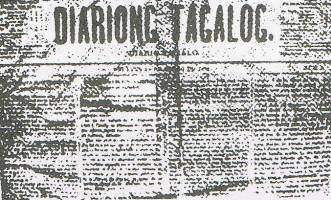Tagalog
Rare Languages we provide
Here at Vandu, we pride ourselves on being able to provide interpreting for the rarer languages needed by our customers. In this blog series, we’ll have a look at these wonderful languages and the unique people that speak them.

Tagalog
Tagalog is a language that originates from the Philippines in southeast Asia and along with English and Tagalog’s standardised form Filipino, mark the nationally recognised languages of that area. All in all, the Philippines is thought to have a whopping 134 languages, though Tagalog/Filipino is by far the most popular language of the country.
The earliest known evidence of the language is thought to be dated back to 900 CE (though Old Tagalog can be dated much farther back than that), but the first real dictionary arrived in the 18th century thanks to a Jesuit missionary named Pablo Cain. The Philippines went through three periods of colonial rule in its history; first under the Spanish, the islands were then ceded to the US following Spain’s defeat in the Spanish-American War, and finally during World War II, when the Japanese Empire took control of the islands. Evidence of this colonialism is observable in Tagalog; its words for the days of the week are lifted from Spanish, and code-switching (when a speaker switches between languages for particular words or entire sentences) to English is very common in the capital and its surrounding areas, and can even be witnessed on national television.
Tagalog and its standardised form Filipino are not without its controversies though. Due to the fact that the Philippines is a group of islands and its subsequent fragmented nature and culture, Tagalog was not a popular choice to form the basis of Filipino by those outside the main Island of Luzon and the capital, Manila. The reasoning was that by placing emphasis on Tagalog as a language, it also implied the same for the Tagalog people as an ethnic group. Eventually a ‘universalist’ approach was adopted and the word ‘Tagalog’ was erased, when regarding the national language.
Finally, you might be wondering what the difference actually is between Tagalog and Filipino – its mainly Filipinos adoption of words from other languages. For example: ‘diksyunaryo’, derived from its Spanish form ‘diccionario’, is the acceptable Filipino translation of ‘dictionary’; however, a Tagalog purist would insist on translating it as ‘talatinigan’.
Do you require interpreting for Tagalog? It’s one of the many rare languages we provide for here at Vandu. Call 01273 473986 or email info@vlslanguages.com for more information!
